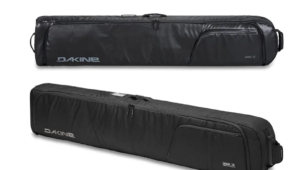
The jigsaw can be used to cut wood, metals and plastics. However, its versatility does not end there. It is a power tool thanks to which we can make both multi-shaped and irregular cuts, as well as make a long and straight cut. Its operation is based on the reciprocating movement of the saw blade – the cutting element of any jigsaw. With the use of this tool, it is possible to process various types of materials, as well as perform successively: straight cuts, cutting holes of any shape, spinning or arc cutting. This workshop tool can be helpful, for example, to make a mailbox – how to do it? Check it out here. However, the implementation of individual tasks depends mainly on the type of the jigsaw itself, its parameters and a properly selected saw blade.
Classification of jigsaws due to the way of cutting
- Traditional jigsaws – their operation is based on the movement of the blade, which is alternately directed up and down. In order for their cutting to be possible, it is necessary to use force, i.e. to slightly press the device so that it’s cutting element moves along the designated line. They are widely available and very popular, mainly due to their low price. You can find jigsaw uses.
- Jigsaws with undercutting – this group includes pendulum and oscillating jigsaws. Here, unlike traditional devices, the saw blade moves not only up and down, but also back and forth, thanks to which we are deprived of the need to exert pressure, and thus – cutting is more comfortable. All this makes jigsaws with a scoring function perfect for processing thicker materials. They are more efficient than traditional ones, but also more expensive.
- Table jigsaws – these are stationary devices, which, as the name suggests, are attached to the table. These are jigsaws that we do not move along the designated cutting line – we perform this activity with the material we process. This type of equipment is intended for professionals who perform precise cuts of large-sized elements: wooden, metal and composite. Table jigsaws allow you to adjust the cut, but what is important – they are not suitable for cutting thick elements. Their price is also higher than that of traditional jigsaws and those with undercutting.
Jigsaws are also stationary devices, but sometimes we can also find them in a mobile version. Their operation is based on the action of a special hair blade, which ensures even greater precision of cutting than that used in table jigsaws. Thanks to this, we can make a very precise cut in the shape of an arc, circle or semicircle. These jigsaws are used for multi-stage and professional work. The most accurate and expensive on the market.
Classification of jigsaws due to the method of power supply
Network jigsaws – these are devices powered by an electric cable, the use of which requires a connection to the network. Corded jigsaws enable continuous and more efficient work – they are lighter than cordless and have more power.
Cordless jigsaws – are the perfect solution when we have limited access to electricity or do not want to use a device equipped with an electric cable. These are heavier devices, but more mobile.
If you are confusing between scroll saw versus band saw then you can choose the Jigsaw for the handy uses.






